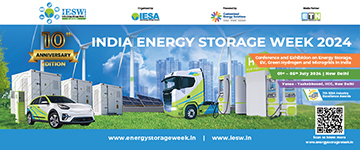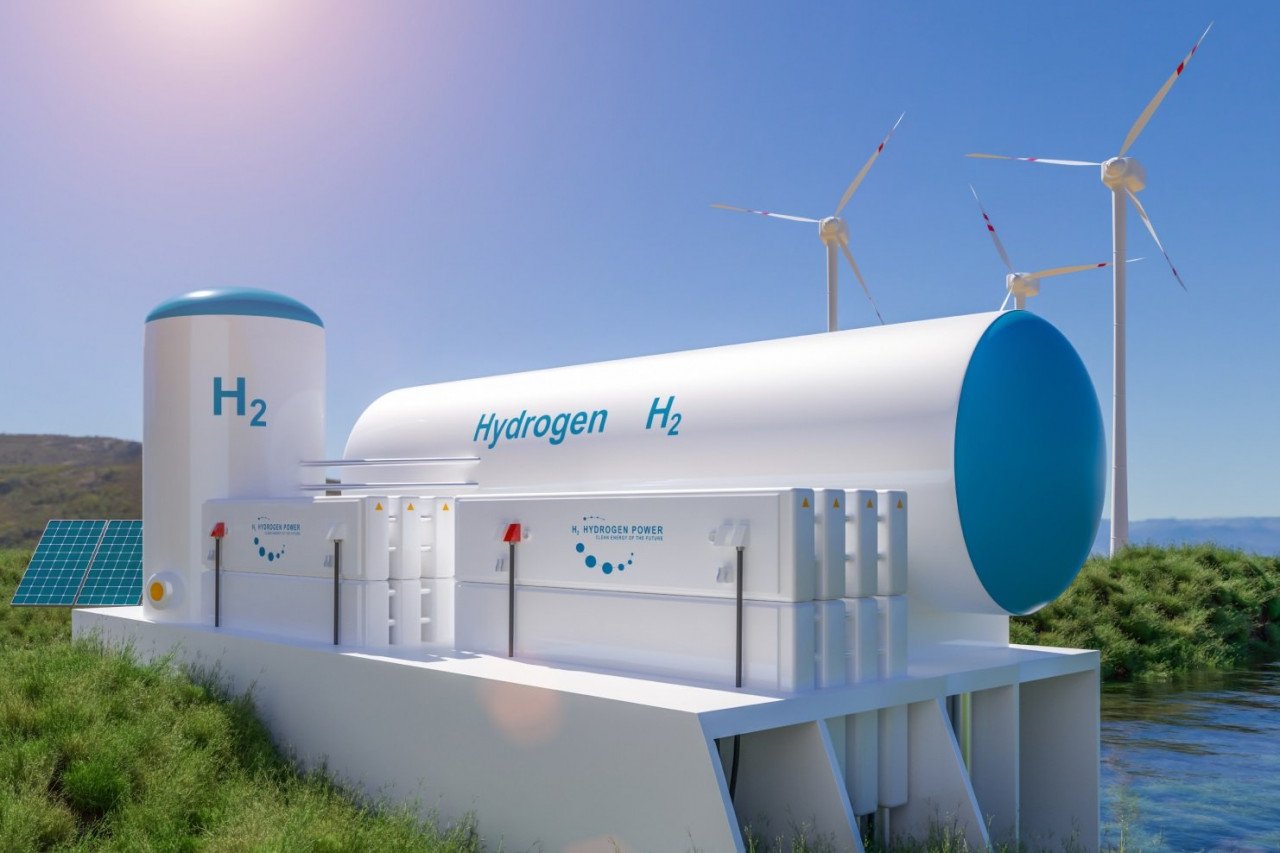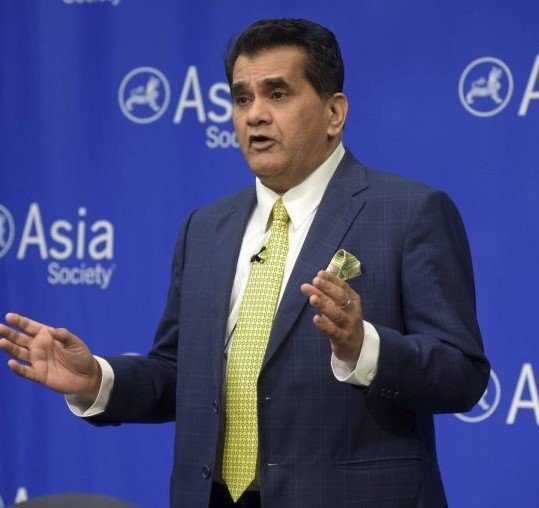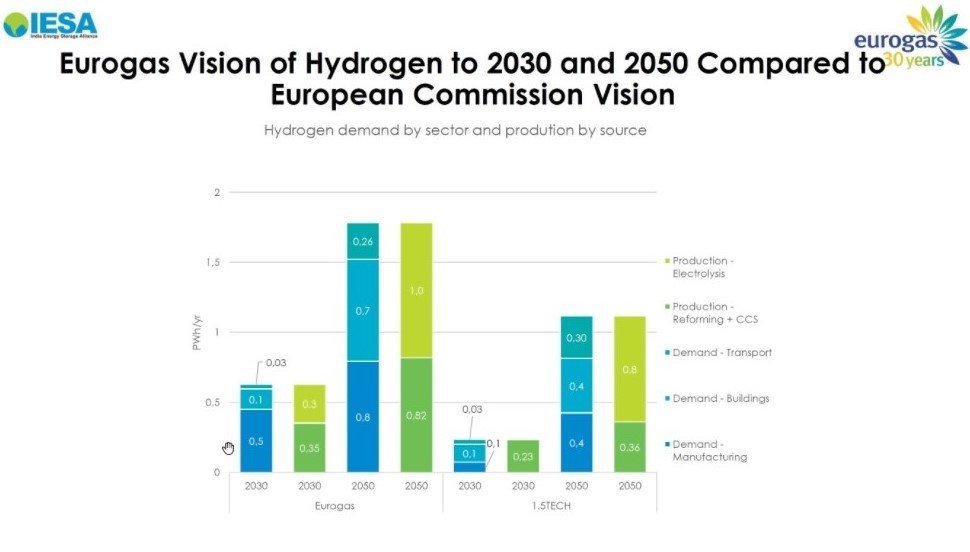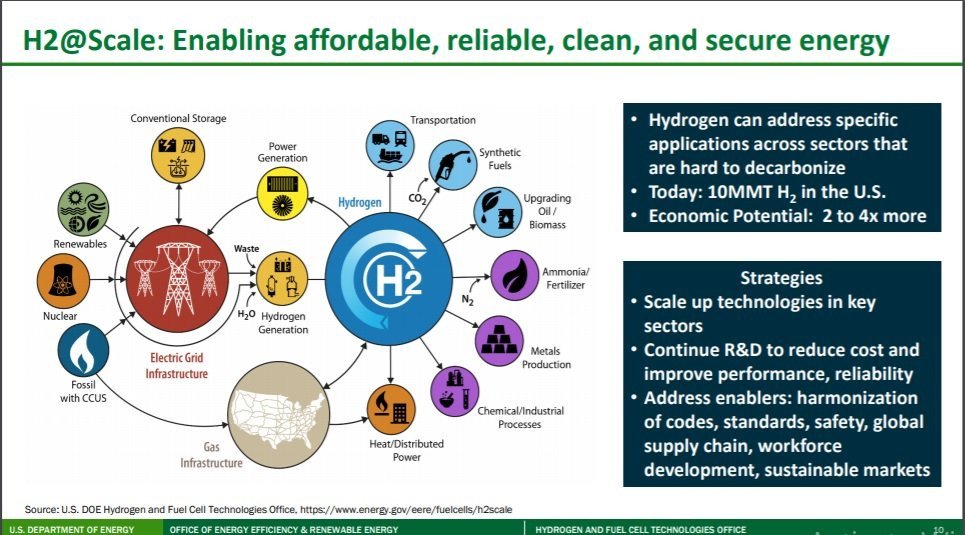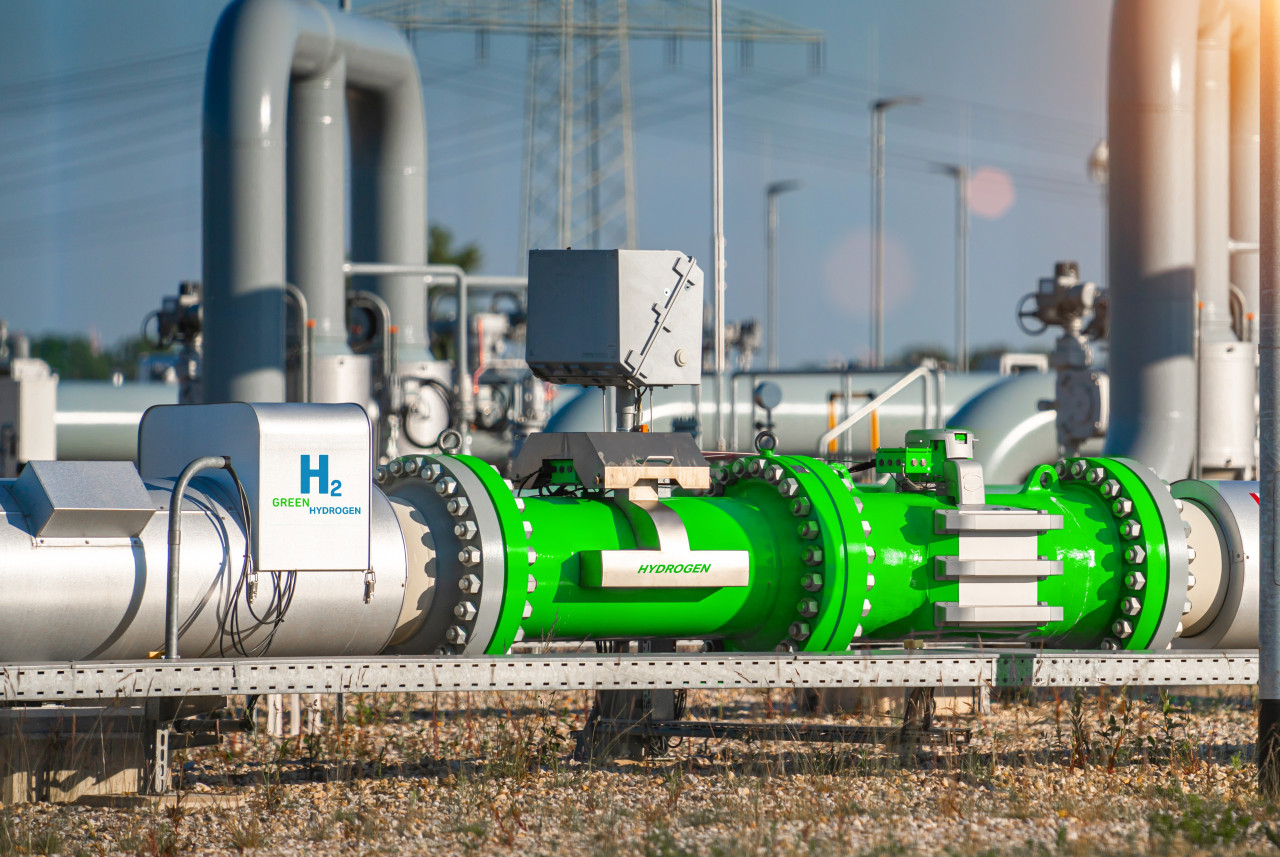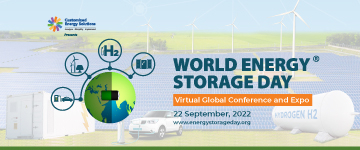Green hydrogen: Charging zero-carbon transition globally
There is a need for a bouquet of policies aimed at driving hydrogen, along with a specific target for CO2 emissions to boost investments and advanced manufacturing levels, globally.
The time is right to tap into hydrogen's potential to secure a clean and affordable energy future. For decades, governments and industries have invested in hydrogen R&D as a future fuel. Globally, governments are developing hydrogen strategies. A global race to develop regional and national hydrogen economies is in progress, with the number of projects and regional policies globally expanding swiftly.
The number of countries with policies that directly support investment in hydrogen technologies is growing, along with the number of sectors they target. Several pilot projects scrutinizing various applications for hydrogen use and viability studies for its transportation are underway.
India rallies for green hydrogen
Like other countries, India too aims to make the most out of this abundantly available element.
In November 2020, at the 3rd Global RE-INVEST Renewable Energy Investors Meet & Expo, Prime Minister Narendra Modi announced Central government plans to put in place a Comprehensive National Hydrogen Energy Mission.
On the same lines, on February 1, 2021, Finance Minister Nirmala Sitharaman while presenting the Union Budget 2021-22 announced a proposal to launch a Hydrogen Energy Mission in 2021-22 for generating hydrogen from green power sources.
Niti Aayog, the policy think tank of the government of India has been at the forefront with its efforts to develop green hydrogen as the sustainable future fuel and being integral in establishing the National Hydrogen Energy Mission in the country. It is also in discussions with the relevant stakeholders to chart out India's approach to green hydrogen.
Speaking at a forum, Amitabh Kant, CEO - NITI Aayog, underlined that "India has formally launched the National Hydrogen Energy Mission (NHEM). Bearing in mind India's 175 GW target of renewable energy capacity by 2022 and 450 GW by 2030, our energy grid must encompass other green technologies on a medium-to-long-term basis."
The NHEM will advantage India lower its emission intensity by 33-35 percent from the 2005 levels by 2030, another Nationally-Determined Contribution (NDC) target under the Paris Agreement, Kant highlighted.
Rahul Walawalkar, President - India Energy Storage Alliance (IESA) believes: "We aim to focus on leveraging experience and explore the opportunities in the emerging hydrogen market. This is the decade for Indian industries to invest in early-stage technologies and make India a global hub for manufacturing and R&D. We at IESA, are continuously working on addressing the issues of the industry and discussing the way ahead in collaboration with the industry."
Global investment
India's great need for energy in the future has led to substantial investments in renewable energy. Of the total installed capacity today, 22 percent entails solar and wind. But until now, India has not capitalized on hydrogen, unlike China and South Korea who are leading the development.
Like many other countries (Australia, the EU, and more), India has now decided that hydrogen will play an important role in the country's energy mix, as well as meeting national and global climate goals.
Asia and the emerging economies are an extremely exciting and attractive market for Greenstat, and for exporting Norwegian proficiency and technology in sustainability.
Sturle Herald Pedersen, Chairman - Greenstat Hydrogen India considers: "We need to work together in tackling the global challenge. No industry or government can solve this challenge by itself. In India, we need a large-scale project to demonstrate the value chain across the sectors. For the last 15 years, there have been new projects initiated in Norway and we are working with MNCs to be able to set these projects in other countries as well."
"Improving energy efficiency has been one of the research areas and we are working towards it. The Centre of Excellence in India is working with governments to create an ecosystem. We are working in Kolkata, Chennai on different pilot projects," Pedersen added.
Jean Louis Kindler, CEO - Ways2H remarks: "Green hydrogen is extremely important and has a good opportunity globally. Today, India's grid capacity is running at 45 percent at 380 GW. The country plans to develop this capacity. Half of the electricity capacity will be renewables in the upcoming decade. One of the major hydrogen usages is in clean and green mobility. We expect a rise in the use of EVs and this will necessitate more green fuels. We are all focused on sustainable ways to produce hydrogen, but the waste needs to be addressed as well."
European steel industry moves to H2
With the hydrogen economy set to boom in the next few years globally, Europe is emerging as the clear leader in planned installations and government policy supporting the sector. The steel industry accounts for 4 percent of all the CO2 emissions in Europe and 22 percent of the industrial carbon emissions in Europe. Replacing coal with hydrogen seems a promising option for decarbonizing the steel production process.
Thierry Lepercq, Founder- DH2 energy (author - Hydrogen is the New Oil), said: "There is immense demand for manufacturing hydrogen globally. For example, in steelmaking, European steelmakers have decided to move towards hydrogen production and convert all their existing plants into hydrogen and deliver zero-carbon steel. As steelmakers, they can only survive with zero-carbon steel. The market demand for products based on green hydrogen is driving the transition."
"The zero-carbon transition is the new-age business strategy and it is happening. In the case of India, the way to approach zero-carbon emissions is to combine the potential demand upstream and downstream with sustainable financing. Hydrogen, a climate product supported by the government, is an interesting story. The transformation of the business approach will happen at scale," Lepercq added.
Investments enabling zero-carbon economy
Hydrogen is seen as a critical component of greening Europe's energy market and delivering with the aim of becoming the first carbon-neutral continent by 2050.
In July 2020, the EU had announced its 'European Green Deal' to enhance its commitment to tackling climate and environmental-related challenges. The hydrogen strategy focuses on hydrogen produced from renewable energy sources. The objective is to decarbonize hydrogen production and expand its use in sectors where it can replace fossil fuels.
Though the focus is on green hydrogen, the EU Hydrogen Strategy recognizes the role of another low-carbon hydrogen in the evolution phase in the short- to medium-term. The ambitious scaling up will also entail a large number of investments to realize the zero-carbon economy.
Bart Biebuyck, Executive Director - Fuel Cells and Hydrogen (FCH), JU, said: "The European Union has announced the Hydrogen Strategy last year. It is consuming 10 million tons of hydrogen at present. So, more hydrogen will be required in the upcoming years. We estimate a total of €420 billion of investment will be required to enhance the pipeline of projects. We need to create hydrogen valleys and it is underway in the Netherlands and will gradually move across Europe over the period time. To realize this strategy, there is a need to scale up electrolyzers and standardized modules."
Sharing his thoughts on India's emerging hydrogen sector, Biebuyck believes that "for India, the certification methodology for CO2 emissions is mandatory. We have to work towards bringing the total cost of hydrogen production and flourish accordingly."
Natural Gas and Hydrogen
Natural gas has a key part to play in reducing EU emissions and has been since 1990. By 2030, in parts of Europe, using natural gas will displace coal and oil thereby improving air quality and reducing carbon emissions contributing to increased ambition for GHG reduction.
The obligation would be on the natural gas to ultimately decarbonize itself to help deliver on a bona fide carbon-neutral economy, and several options to achieve this are being produced today such as biomethane and hydrogen (both blue and green).
James Watson, Secretary-General – Eurogas, stated: "We represent the European gas system. We believe there is a huge opportunity for hydrogen in Europe. There will be strong electrification globally as we have in Europe. The opportunity is huge for an effective system to convert hydrogen for multiple applications. There is a huge target of 40 GW by 2040 in terms of hydrogen. There is a need for a strategy for the import of hydrogen to the EU to meet its needs and drive the market."
Speaking about the need for policy enhancement to support the Indian hydrogen sector, Watson advocates: "India should consider policies aimed at driving the hydrogen along with a specific target for CO2 emissions and will enhance investments. The country will benefit from the global development on the future of hydrogen."
Enhancing hydrogen storage technology
Hydrogen progressively looks likely to have a role to play in accomplishing decarbonization targets globally, and investments and innovation are scaling up. But costs remain high and for clean hydrogen to be most effective at integrating high shares of renewable energy, storage is important.
The success of hydrogen in becoming a mainstream, clean energy or consumer fuel is reliant on the development of a safe system for transportation and robust hydrogen storage materials. Storing hydrogen gas has become one of the most relevant research and development areas surrounding hydrogen technology, and will be the key to mainstream adoption.
Matt Fairlie, Vice-Chair - Next Hydrogen Corporation, stated: "We need to rethink the energy storage objective. Green hydrogen production requires a cost-effective storage alternative. It is important to develop a renewable generation grid for sustainable power demand mitigation. The financing for large hydrogen plants is only possible when we think of a high-value market and align our technologies accordingly."
Japan's emerging hydrogen sector
Japan's massive investment in hydrogen energy is directed at positioning the nation as a world leader in the energy economy. It was one of the first countries to commit to pursuing hydrogen as an alternative energy source and is investing 84.8 billion yen ($802 million) in fiscal 2021.
It was the first country to adopt a 'Basic Hydrogen Strategy' as early as 2017. This strategy principally aims to achieve cost parity with competing fuels such as gasoline in the transportation sector or liquefied natural gas (LNG) in power generation and covers the entire supply chain from production to downstream market applications.
The government has begun investing in R&D and providing an expansion of the hydrogen infrastructure (including support for low-cost, zero-emission hydrogen production) for import and transport abroad within Japan, and an increase of hydrogen use in various areas such as mobility, cogeneration of power, and heat, as well as power generation.
Eiji Ohira, Director-General - Fuel Cell and Hydrogen Group, Japan New Energy and Industrial Technology Development Organization (NEDO), emphasized: "We aim to promote decarbonization across the sectors and advocate the use of renewable sources. There is an opportunity for green growth through a sustainable strategy. The goal is to reduce the cost of hydrogen production. There have been massive efforts put into R&D activities and developing hydrogen pipelines, transportation. Japan has the vision to accelerate its activities in enhancing hydrogen exploration."
The business case for hydrogen production
Corporate PPAs can provide a long-term revenue solution and thereby facilitate the cost-efficient, long-term financing of a new build project.
Massimiliano Cervo, FMVA, Director - Business Development at H2helium Projetos de Energia Ltd., stated: "We have a different kind of CAPEX involved in buying power from centralized as well as decentralized generators. We need to try to focus on the variables impacting the most as a driver of hydrogen economics. The cost of capital has to be considered as it makes the impact to a greater extent. Cheap hydrogen without proper PPA is a faraway dream."
"There are two kinds of projects in hydrogen - bankable and emerging. Today, what private equity investors are trying to finance is the bankable project. The offtake of the emerging market is uncertain as the applications do not guarantee profits. We need to think of financing startups and encourage them to take up emerging projects. Hydrogen needs a real cash flow. The energy industry is in the transition phase," Massimiliano added.
US hydrogen road map
The US Department of Energy (DOE) released its Hydrogen Program Plan to provide a strategic framework for the Department's hydrogen research, development, and demonstration (RD&D) activities. This version of the plan updates and expands upon previous versions including the 2006 Hydrogen Posture Plan and the 2011 DOE Hydrogen and Fuel Cells Program Plan.
It has also announced up to $64 million in funding to advance innovations that will build new markets for the H2@Scale initiative. This investment will support transformational research and development, innovative hydrogen concepts that will encourage market expansion and increase the scale of hydrogen production, storage, transport, and use.
Dr. Sunita Satyapal, Director - Hydrogen, and Fuel Cell Technologies Office, U.S Department of Energy (DoE), stated: "At US DOE, we aim to enable renewables and go completely green and be a zero-carbon country by 2050. We produce 10 million MT of hydrogen in the US. We have launched projects in addition to R&D to explore hydrogen applications in several regions across the US.
There are quite a few targets to set a goal and signal the investment community to leverage partnerships and accelerate the progress in hydrogen development. We have enhanced our global efforts towards a robust alternative as well as sustainable energy ecosystem and accelerate carbon-neutral environment, Dr. Satyapal further added.
EU's green hydrogen ambition
Governments globally realize that clean hydrogen, which can be produced from renewable electricity or hydrocarbons with CCS, will play an indispensable role in reaching the Paris Agreement goals.
Hydrogen is a versatile and low-carbon energy carrier that can drive down GHG emissions in otherwise difficult sectors to decarbonize.
The European Union has set a target to provide a total of 40GW of electrolyser capacity to produce green hydrogen by 2030.
GCC embraces hydrogen
As decarbonization becomes progressively imperative globally, Gulf Cooperation Council (GCC) countries are looking to diversify their economies away from hydrocarbons while maintaining a central role in the global energy system. Given plentiful natural gas, the region is sure to be a prime location for blue hydrogen development with carbon capture and storage, but it is the prospect of large-scale green hydrogen production that is firing up imaginations – and fuelling investment.
Frank Wouters, SVP-Energy Transition - Reliance Industries, said: "We expect massive growth in hydrogen demand by 2030 and there is a huge opportunity for the same. Korea, Japan, and Europe have limited opportunities for renewables and will remain net importers for hydrogen. The cheapest way to transport hydrogen is through gas pipes and it is cheaper than electrical cables. The market in India looks promising."
Green hydrogen in Australia
The key use of hydrogen in Australia is in the form of raw materials for industrial processes. The use of renewable hydrogen will assist Australia to ease emissions in the high-temperature industries as well as transport segments.
The Australian Renewable Energy Agency's report on 'Opportunities for Australia from Hydrogen Exports', studied that global demand for traded hydrogen would be around three million tons each year by 2040, adding up to around $10 billion each year to the economy.
In 2019, the Council of Australian Governments (COAG) Energy Council recommended a National Hydrogen Strategy.
It was developed by a task force steered by Dr. Alan Finkel, Australia's Chief Scientist. The strategy charts out a comprehensive roadmap for the development of a clean, innovative, safe, and competitive hydrogen industry.
It also identified around 57 mutual actions to be taken by the Australian government in approximately seven areas:
- National coordination
- Developing production capacity, supported by local demand
- Responsive regulation
- International engagement
- Innovation and R&D
- Skills and workforce
- Community confidence
The actions consider hydrogen concerning exports, transport, industrial use, gas networks, electricity systems, and cross-cutting issues such as safety, skills, and environmental impacts.
Alongside the strategy, the task force also launched AusH2 – the Australian Hydrogen Opportunities Tool.
AusH2 permits consumers to explore potential hydrogen production sites using powerful and customizable geospatial data capability.
Craig Ehrke, CEO - Skai Energies, stated: "In Australia, core engineering feasibility studies have been conducted on hydrogen. There is a lot of reinvention. Various stakeholders are talking about collaborations. With collaborations, technical solutions are being worked out. We look to leverage our learnings and advanced emerging markets here."
Ben Todd, Founder-CEO - Arcola Energy, stated: "We are specialists in hydrogen fuel cell integration focused on zero-emission heavy trucks. We are making a massive transition to hydrogen on a global scale. We are still in the development stage. Low-cost commercial finance is no match for large-scale product development. With 10-plus years of fuel cell vehicle engineering experience, we are building upon the prospect that the sector has to offer. Arcola Energy is leading the consortium to deliver Scotland's first hydrogen-powered train."
IESA initiatives
In its ongoing series of industry roundtables for emerging clean hydrogen technology, India Energy Storage Alliance (IESA) under the MIGHT (Mobility and Infrastructure with Green Hydrogen Technologies) initiative, conducted the global roundtable on 'Green Hydrogen and Hydrogen Mission for India' in May with the theme of 'International Collaboration Technology Roadmap for India'.
The global roundtable deliberated on the recently announced National Hydrogen Energy Mission that aimed to draw up a road map for using hydrogen as an energy source.


